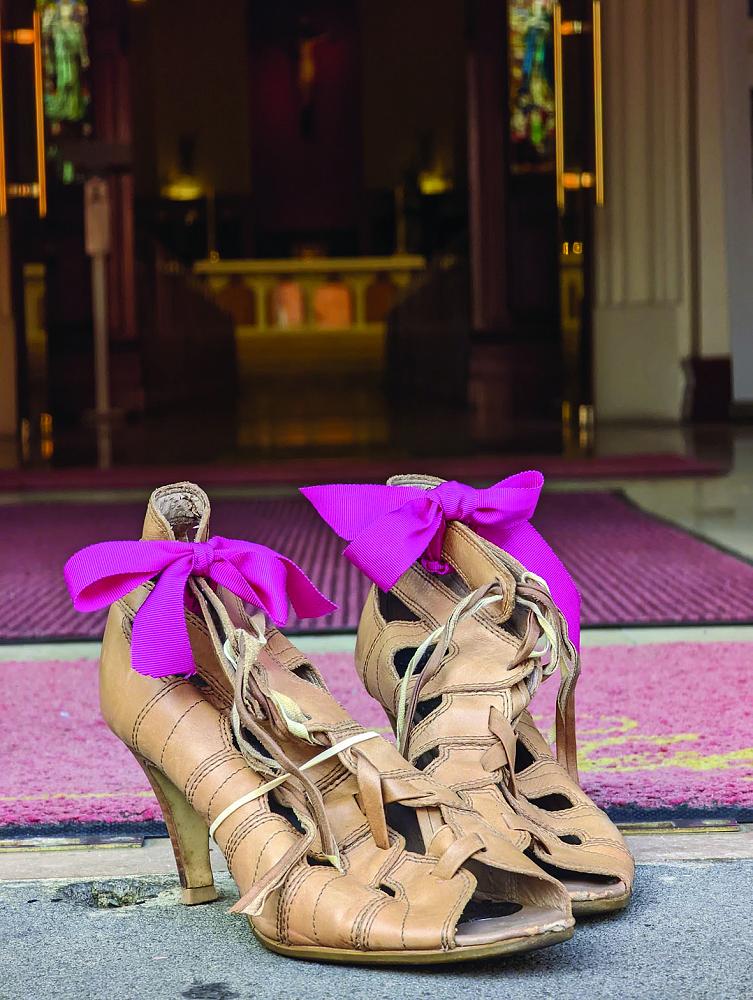
Pink Shoes in the Church
People in central Auckland last month were greeted with an intriguing piece of performance art protesting suppression of women's rights in the Catholic Church. From the Kate Sheppard Suffrage Centenary Memorial at Khartoum Place down into the heart of Queen Street and then up Shortland Street to St Patrick’s Cathedral, more than 500 Catholic women laid down their pink shoes in silent protest at their exclusion by their own Church. Their poignant stories, attached to the shoes, spoke of lives of service and faith trivialized by an outdated and outmoded institution that welcomed their service but denied them equal decision-making rights.
Their point was clear. These women have had enough. Surprisingly, their local bishop agreed. In a letter to the convenors of the group, Bishop Steve Lowe expressed considerable support: "So thank you for your prophetic hikoi to the Cathedral today which is ultimately a call to respect the dignity that flows from being created male and female in the image and likeness of our God. Your voice today echoes the voice of women throughout the world, who are part of the current synodal process, and are calling on the Church to reflect the inherent dignity of women in the leadership of the Church . . . May we have the courage not to get stuck in structures that are not necessarily of God."
He signed off with a lovely line: “Together may we be docile to the movement of the Holy Spirit who is active in all the people of God as She invites the Church ever more forth on the way to the Kingdom of God.”
This doesn’t seem to me to be polite language, designed to pacify the objectors. The gender of God is not a typo. This is an intelligent invitation to go further — to find out where this challenge takes us next.
We could start with conversations generated by the shoes on the street. People were intrigued. Complete strangers stopped in their tracks and read the captions attached to the shoes. Not just one of the captions, but two and three and four sets of shoes were examined. Then people look around: “Who’s doing this?”, they wondered. And that’s when the really interesting stuff happens. There’s a chance for connection, conversation. People ask: “How can it be in this day and age that women are excluded? Why do people put up with it? How come they just don’t walk away?”
Occasionally as I walked the shoe-line looking for reaction, someone would provide a verbal blast about God wanting it to be this way and those who don’t agree being heretics. In every case this was a man.
Let’s talk about the creative women behind this artistic protest. These are passionate women who spend much of their time outside their working lives looking to make our Church more hospitable to their daughters and sons. These women are highly educated and theologically literate, historically loyal but fed-up with the slowness of positive change for women and the barriers to full participation. They are hanging on because they are older and they see a value in loyalty, even when they dispute leadership.
These women can be stroppy. They are all Pākehā. The 10.30am Eucharist crowd at the Cathedral is mostly not. Indeed the ethnic diversity is spectacular. But the Pākehā are mostly gone, simply dots in the pews pulsing with a different set of worldviews and cultural appreciation of their Church as an institution.
Is this a clue? Are we struggling to win the argument for gender equality in the New Zealand Church because there are not enough of us Pakeha to prosecute it? Could it be that this horse has bolted and that Pākehā Catholic women in particular have already walked away in large numbers?
Might it be that the notion of gender equality itself is a cultural construct that doesn’t have purchase in the Catholic worshiping experience of migrant communities of Aotearoa? Are we Pākehā in a minority to hold this view?
I’m not certain of the answers, what to think or what to do, but I suspect we ought to take Bishop Steve Lowe at his word.
Tui Motu Magazine. Issue 275 October 2022: 3
